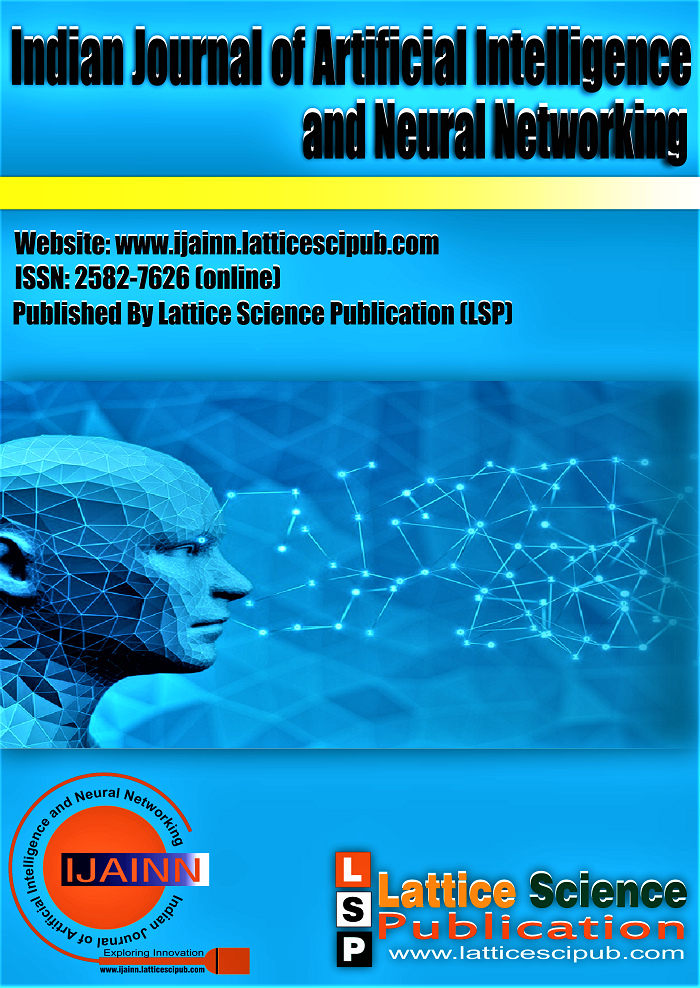Achieving Fairness with Intelligent Co Agents
Main Article Content
Abstract
Fairness in resource allocation is a important problem that has many real life consequences. Althoughmany algorithms that try to achieve envy free allocation, proportionality or min max share were proposed that tries to encapsulate fairness this does not suffice because it was inherently assumed that agents are not intelligent and there is uniformity in treatment. This is vastly different from real life where there are many scenarios where agents would actively try to sabotage or reduce the allocation given to their adversaries. Therefore all agents must not be treated the same way. As seen in economics cartels are where certain players collaborate and try to maximize their interest by undermining competition. This could lead to dangerous consequences and unfair means as seen withreal life examples of apple or google undermining competition by monopoly as explained clearly in (Das, Dhamal, Ghalme, Jain, & Gujar, 2022 [1])
Downloads
Article Details

This work is licensed under a Creative Commons Attribution-NonCommercial-NoDerivatives 4.0 International License.
How to Cite
References
Das, S., Dhamal, S., Ghalme, G., Jain, S., & Gujar, S. (2022). Individual fairness in feature-based pricing for monopoly markets.
Jiang, J., & Lu, Z. (2019). Learning fairness in multi-agent systems.
Michelson, J. (2022). Developing a philosophical framework for fair machine learning: The case of algorithmic collusion and market fairness.
Schwalbe, U. (2019, 06). ALGORITHMS, MACHINE LEARNING, AND COLLUSION. Journal of Competition Law Economics, 14(4), 568-607. Retrieved from https://doi.org/10.1093/ joclec/nhz004 doi: 10.1093/joclec/nhz004
Voona, V. N., Sathwik, E., Jayanth, T. S., & Rohan, T. (2022). Brain Segmentation using MATLAB. In International Journal of Innovative Technology and Exploring Engineering (Vol. 11, Issue 8, pp. 43–49). https://doi.org/10.35940/ijitee.h9164.0711822
Turamuratova, I. (2022). The Role of Metaphor and the Role of a Creative Person in Constructing a Conceptual Picture of The World. In Indian Journal of Social Science and Literature (Vol. 2, Issue 1, pp. 24–26). https://doi.org/10.54105/ijssl.d1020.092122
Numonovna, E. G. (2019). Issues on Oriental Moral Identities in Islamic Religion. In International Journal of Engineering and Advanced Technology (Vol. 9, Issue 1, pp. 4646–4647). https://doi.org/10.35940/ijeat.a2927.109119
Ihsan, M., R, Prof. Dr. H. M. R., Setiawati, Dr. R., & Zamzami, Dr. (2022). Analysis of Business Management Regional Public Company (Perumda) Drinking Water in Jambi Provinc. In International Journal of Recent Technology and Engineering (IJRTE) (Vol. 11, Issue 3, pp. 45–53). https://doi.org/10.35940/ijrte.c7254.0911322
Yadav, D. S. (2022). Fiscal Consolidation The Indian Experience. In Indian Journal of Economics and Finance (Vol. 2, Issue 1, pp. 17–23). https://doi.org/10.54105/ijef.c2517.051322





